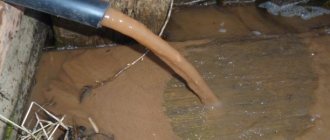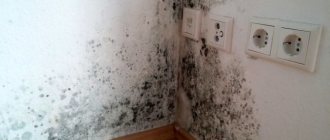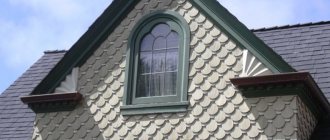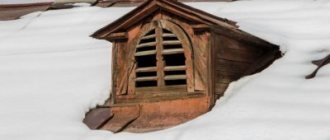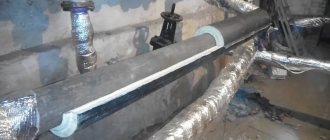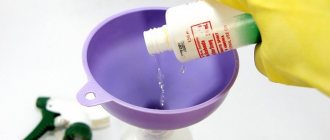Dampness in the garage is a common problem. Basically, condensation accumulates on the ceiling space, less often on walls and internal structural elements. High humidity indoors is extremely harmful to the machine body and contributes to the rapid destruction of the structure. How to get rid of condensation in the garage yourself is described in detail in the following information.
How harmful is condensation in a garage?
High humidity has always been considered an undesirable phenomenon indoors. This is associated not only with a possible risk for metal elements, but also with a danger to humans. The fact is that in such conditions, especially when the temperature rises, an active process of reproduction of pathogenic bacteria and fungi begins. If the walls of the garage are constantly exposed to such processes, mold and mildew will inevitably appear on them, which is very dangerous for humans.
Negative consequences of condensation in the garage:
- Car body corrosion. An increase in humidity will inevitably affect the service life of your “iron horse”.
- Poisonous fumes. Dampness adversely affects indoor air quality, causing evaporation of lubricants and combustible materials.
- Biological contamination of the premises. You can notice mold and mildew stains on the walls, floors and floors, which are very difficult to remove. The negative impact they have on the human pulmonary system is difficult to overestimate.
- Building destruction. High humidity also leads to the gradual destruction of the room. This is especially harmful for a metal garage, but concrete walls and ceilings are also susceptible to such processes.
- Condensation on the garage door causes the mechanism to break down. As a result, it is difficult or impossible to open/close the gate.
To summarize, we can firmly state: condensation on the ceiling and walls of the garage is extremely harmful, so this phenomenon must and can be dealt with. To properly solve this problem, you must first understand the causes of condensation on the garage ceiling.
Poor thermal insulation
Often condensation forms due to lack of insulation on the roof - this is usually common in areas with colder climates. The reason may be poor-quality insulation material or its layer is too thin - due to the insulation’s inability to maintain the required temperature in the room, heat enters the attic, which is not heated, as a result of which condensation forms on the surfaces of the rafters and corrugated sheets.
This cause of moisture on roof surfaces can be eliminated by replacing or increasing the insulation layer over the entire roof area. But often heat leaks do not occur over the entire insulation area, but only in small areas, and in order to effectively solve the problem, they must be detected.
To detect areas with poor insulation, you can monitor the melting of snow in the spring - in places where heat leaks, it will melt faster. If this method does not help, it is recommended to use a special device - a thermal imager. The service is quite expensive, but potential roof repairs to replace rotten rafters or roofing will likely cost more.
Main factors causing condensation
There can be several reasons why condensation appears in a garage. Moreover, this problem can arise in buildings made of any building material, built at different times of the year and using different technologies. Condensation appears at sub-zero temperatures due to cooling of the outer surface of the building. The inside of the garage remains heated, so drops of moisture appear at the dividing joint. This dividing line is usually the ceiling and walls, so it is on such surfaces that condensation appears.
Why does the humidity level increase in the garage?
- Insufficient ventilation of the room. A well-thought-out air exhaust system from the garage is necessary during the construction stage. Improving or making it later is also not so difficult. Many car owners close the air vents to ensure sufficient heating inside the room, but this should not be done under any circumstances. Insufficient air circulation can even lead to poisoning by harmful substances.
- The insulation of the internal surfaces of the room has not been completed. This is a necessary measure to reduce the difference between the temperature inside and outside. Moreover, we are not talking about cold bridges, but about another concept - dew point.
- Finishing work was carried out incorrectly. The joints between materials must be sealed. If this is not done, you can expect that it is in these places that there will be maximum accumulation of moisture.
A small amount of moisture on the ceiling and walls can be ignored, since such phenomena cannot be completely eliminated. An alarming signal can be stagnant air in the room, as well as damage to metal products inside the room. Well-organized ventilation is also a safety requirement, because in the garage there are compounds harmful to humans that can lead to poisoning or even suffocation.
Why does a corrugated roof leak?
If the cause of the leak is not the formation of condensation, you should ensure the integrity of the roof covering. The corrugated sheet itself cannot be the cause of a leak - profiled steel is characterized by high strength and corrosion resistance. That's why:
- Make sure you select the correct size of roofing sheeting;
- Check the quality of joints and fastenings;
- Make sure to correctly calculate the load-bearing capacity of the profiled sheet;
- Think about whether mistakes were made in the construction of the roof;
- Check the presence of all necessary additional elements.
Buy high-quality corrugated sheeting from the manufacturer, follow the basic installation requirements, do not neglect the recommendations of specialists, and your roof will last for decades without a hint of repair!
Good luck in construction!
Ventilation arrangement
This is a necessary measure, even if high humidity is not that much of a concern. This is due, first of all, to safety rules, because many substances hazardous to humans are stored in the garage. If the garage is equipped with a cellar, it is necessary to consider two systems independent of each other; there should be no air connections between them.
How to make a ventilation system with your own hands:
- You will need two pipes of the same diameter. One serves to supply air from outside, the second removes fumes from the room.
- The location of the supply pipe should be approximately 20 - 25 cm from the floor. To improve traction, it runs slightly at an angle.
- The exhaust outlet must be done directly under the flow, because warm air will accumulate there. To enhance air communications, it is necessary to bring the end of the pipe to a height of approximately 1 - 1.5 meters above the garage roof.
- Be sure to consider a mesh at the outer ends of the ventilation pipes to protect against rodents and precipitation getting inside.
- If natural ventilation is not enough to organize normal air exchange, small fans must be installed at the ends of the exhaust and supply pipes. This will significantly increase traction and promote air flow at any time of the year.
- A combined ventilation system involves the use of both options, but it is also better to make special plugs at the ends of the pipes to prevent excessive freezing of the room at subzero temperatures.
Properly organized ventilation will not allow moisture to accumulate on the walls and ceiling. If your garage already has air ducts, you should check their condition regularly. It may be necessary to install additional pipes, or increase the diameter of existing ones. Don’t forget about the grate at the exit to prevent debris, sediment or unwanted “guests” from getting inside. At the upper end of the exhaust pipe it is necessary to install protection from rain and snow, otherwise the effectiveness of ventilation will be very doubtful.
Warm attic
Modern heating systems almost eliminate natural circulation, so it’s simply impossible to do without enhanced ventilation. A counter batten is sewn under the flexible tiles and sheet metal to ensure local ventilation of the area. Under a metal roof it is worth using a windproof film. When there is slate on top, there is almost no need for counter-battens, since the “pie” itself does not interfere with circulation.
Air intake is organized through windows, and air exit is through special openings. If they are not available, the hood is equipped with aerators in the form of “mushrooms”.
Insulation of the inside of the garage
If ventilation has failed to cope with the problem of condensation in the garage, you need to consider the possibility of insulation. This will change the location of the dew point and allow you to use the room more efficiently. Various options are possible here, depending on the materials used in the construction of the garage.
Required materials and insulation technology:
- The dirt floor of the garage must be concreted to prevent the penetration of moisture from the soil. For this, a standard scheme, waterproofing material and concrete solution are used. It’s quite easy to do this with your own hands, you just need to make sure that the entire surface of the floor is covered. If the inspection pit was also not concreted, it’s time to do this work too.
- Foundation defects and damp concrete floors in a garage can be corrected with additional waterproofing. For this purpose, bitumen mastic is used, which covers the entire surface of the floor. The mixture must be warmed up a little before application, but there are also cold types of mastics. The coating is applied in two layers in accordance with the manufacturer's instructions.
- Insulating the ceiling and walls of the garage requires much more expense, but this is the most effective way. For this, any suitable materials are used: polystyrene foam, polystyrene foam or penoizol. It is better not to use fibrous materials, for example, mineral wool, because they can accumulate moisture, thereby losing their properties. To improve the quality of insulation, it is also advisable to use a film - a hydrobarrier.
- Insulation with foam materials. This method is effective, but is only possible if you have the necessary equipment. At the preparatory stage, frame profiles are installed, between which material is sprayed. The insulation layer is small enough that the space will not be reduced. At the same time, the service life of such insulation is very high.
The most popular and inexpensive is insulation using polystyrene foam. This is a lightweight and affordable material that is easy to install, even when doing the work yourself. The disadvantage is the thickness of the foam, so in small rooms it is better to use modern analogues of this material - expanded polystyrene or penoizol. The latter option is even easier to install, because you can simply stick it on the surface. You can additionally cover the insulation sheets with moisture-resistant plasterboard or chipboard sheets - this will provide the maximum possible protection.
How to fix the problem?
Homeowners are often asked the question of how to get rid of condensation on the roof and under the ceiling of the first floor. Having realized the scale of the problem, many are clutching their heads, calculating possible losses.
To combat condensation, it is better to involve experienced professionals who will identify violations and find the optimal solution. To eliminate condensation on a roof made of metal tiles or corrugated sheets, follow the following algorithm:
- Diagnostics . To determine the weak points of the roof, it is necessary to diagnose it. The most convenient way to do this is in the cold season, when it snows, using a thermal imager. This method allows you to clearly see where the heat is going. Usually this happens at the junction, then to solve the problem it is enough to further isolate these places.
- Checking the functionality of ventilation . To get rid of excess humidity, it makes sense to abandon natural ventilation in favor of forced ventilation. This measure will reduce excess humidity in the under-roof space.
- Installation of additional thermal insulation . The most obvious solution to combat condensation is reflective thermal insulation of the rafters with the ceiling, which eliminates the problem of the temperature difference between the surface of the roofing material and the ambient temperature.
Roofing pie metal roofs
Note! It is much easier and cheaper to immediately make a roof in compliance with technology and use high-quality materials than to redo the entire structure later. To do this, you have to open the roof slope, replace thermal insulation, interrupt the vapor barrier and waterproofing, which causes costs to increase several times.
Installation diagram of vapor barrier and waterproofing
Useful tips for insulating a garage
When carrying out work on insulating a garage, you must also adhere to the basic rules that will give maximum results. This data was obtained as a result of the personal experience of many car owners who encountered the same problem. It is especially important to provide insulation if problems with high humidity have not previously been observed.
Important nuances of performing insulation:
- Before installing insulation, it is advisable to dry and warm the room to prevent moisture from flowing under the insulating layer. To do this, use a heat gun or a hair dryer.
- Mandatory sealing of the joints of the insulation used. Without this, the effectiveness of the event will be low. By the way, the appearance of condensation after insulation has already been completed may indicate insufficient sealing of the seams in the building materials.
- If the garage is a permanent structure with an attic space, insulation can be done there. For this, any suitable materials are used, and fiberglass mats and mineral wool are also suitable.
- Brick walls must be insulated on both sides. The same rule applies to structures made of shell rock.
- For rolled heat-insulating materials, it is not necessary to construct a wooden or metal frame. It is advisable to combine the use of sheets of foam plastic or expanded polystyrene with additional sheathing, to which the structure and finishing sheets will be attached.
High-quality insulation of the garage will also help get rid of other problems. First of all, this contributes to better storage of cars and tools, and will also prevent premature wear of the structure. If the room is connected to a residential building, insulation will help avoid problems with heating residential premises. A separate structure must be insulated not only inside, but also outside. If we are talking about a metal garage - a shell, external insulation is not used.
Violation of technology, low-quality materials
The use of cheap materials for waterproofing or violation of technology can seriously affect the condition of the structure. As a result of violations of the installation principle or the use of materials whose quality does not correspond to the declared one, condensation may appear.
The way to deal with this problem is quite obvious: you will have to replace low-quality products with other materials. If the roof was assembled incorrectly, it will have to be re-laid.
Layers of waterproofing and vapor barrier
Construction of roof layers in practice
Other ways to eliminate condensation
The methods described above are universal and very effective, but sometimes these measures are not enough. If the garage has good ventilation, the floor is concreted with waterproofing coatings, the walls, ceiling and gates are sufficiently insulated, but the problem of excess moisture still remains, perhaps you should consider another solution to it.
Installation of a water drainage system
If moisture condenses exclusively on the ceiling and all measures to eliminate it do not bring the expected result, you can make a temporary drain. This method is used to eliminate condensation in temporary garage structures, as well as when it is impossible to carry out work on insulating the ceiling and walls (lack of funds, inappropriate time of year). To do this, a film is stretched under the ceiling and a sheet of galvanized metal, possibly profiled, is installed. The main trick is to fix the sheet with a slight slope so that the moisture drains. A drain is installed in this place, the end of which is led out. This will not solve the problem in a global sense, but as an option, such a structure is quite suitable.
Additional insulation on the outside
If the garage space is separate from other buildings, the problem can be solved by external insulation. Modern finishing materials are also used for this. The easiest way is to insulate the roof using a layer of expanded clay or brick chips. This material absorbs moisture well and dries well. The insulating layer must be thick enough and porous to prevent heat loss.
Garage heating
The most effective way is to organize constant heating of the garage space. If it is located in the basement of a residential building or in its immediate vicinity, this is not difficult to do. For detached buildings, it is possible to provide mobile heating systems, ranging from homemade stoves - potbelly stoves - to modern split systems.
Which vapor barrier to choose. Pros and cons of different materials
Choosing the right vapor barrier material is very important, since the effectiveness of the thermal insulation cake depends on it, and on its combination with insulation.
In ancient times, this role was played by clay mixed with soil and plants (peat, shavings, sawdust, leaves, etc.). It protected the floors from temperature changes.
Modern steam and heat insulators make installation procedures faster and easier.
But, according to professionals, they are often inferior in quality to old materials. For reference. Vapor permeability as a characteristic of a material indicates how many grams of water in the form of steam can pass through each square meter of film per day. If this amount is expressed in tens of grams, then such material is called vapor barrier. The lower this indicator, the less steam will pass to the insulation.
Types of modern vapor barrier
Glassine is an inexpensive option (70 mg/m2 per day) for domestic buildings with a stable humidity level. Plus - it perfectly prevents the passage of moisture, and minus - low air conductivity.
Polypropylene or polyethylene films (often reinforced; 3−5 mg/m2 per day). This material tolerates temperature fluctuations well; resistant to physical impact and ultraviolet radiation. Ideal for wooden structures. Polyethylene is suitable for warm regions of the country: at low temperatures it quickly loses its properties. The disadvantage of polyethylene is that it tears easily, so it is difficult to install.
Polyethylene film is the simplest type of film vapor barrier
Polypropylene film is stronger than polyethylene; can be produced with the addition of viscose and cellulose, which makes it stronger and more hygroscopic. The downside is that when installing it, good ventilation of the room is required, otherwise the water accumulating on the insulator will not be able to evaporate.
Polypropylene film is a more practical type of vapor barrier for the attic
Membranes with a foil shell (0.04−2.55 mg/m2 per day) are an option for houses with high humidity and frequent temperature changes (baths, swimming pools, etc.). Withstands high temperatures and prevents the passage of steam well.
Membrane is the most modern type of vapor barrier
Types of membranes:
- Kraft paper: foil - easy to install, but not resistant to microorganisms; poor hygroscopic properties.
- with lavsan coating - very high temperatures (ideal for saunas and baths), but does not tolerate the effects of cleaning chemicals.
Foil fiberglass
Anti-condensation diffusion membranes (3-15 mg/m2 per day) - a new product in vapor barrier; installation is possible on any side of the thermal insulation layer. The material is double-sided: the rough side is placed towards the flowing air steam, the smooth side does not allow water inside.
All membrane vapor barriers are capable of passing moist air in only one direction, which ensures rapid outflow of water and good air exchange throughout the entire room. When installing membranes, good ventilation is also required.
Liquid vapor barrier materials - varnishes and mastics. After application, they form a film that retains water but allows air to pass through. Plus - it practically eliminates the possibility of mold or mildew. The downside is that not all products, due to their composition, can be used in residential buildings.
Liquid hydro-vapor barrier
Modern new coatings are an analogue of varnishes and mastics, having properties similar to them; used for vapor barrier of the ceiling on the side of a cold attic or flat roof.
Table. Comparative characteristics of popular brands of vapor barrier
| Material | Weight, g/m2 | Vapor permeability in 24 hours, g/m2 | Longitudinal/transverse strength, N/5 cm |
| Glassine | 240 | 79,2 | — |
| Polyethylene film 0.16 mm thick | 120 | 3,2 | — |
| Isorok Foyle VB | 90 | 5,5 | 150/110 |
| Izospan B | 70 | 0,14 | 128/104 |
| Icopan, Monaflex classic | 110 | 0,22 | 285/260 |
| Icopal, Elephant Skin | 200 | 0,2 | 460/410 |
| Nicobar 85 | 85 | 0,8 | 300/200 |
| Ondutis P70 | 105 | 0,7 | 375/275 |
| Tyvek | 100 | 4,9 | 550/450 |
| Utah, Utahfol N96 Silver UV | 96 | 0,98 | 600/450 |
| Utah Standard | 118 | 1,1 | 230/300 |
Types of vapor barriers
To correctly install a vapor barrier, you need to correctly determine its type:
Type A - passes steam coming from the room through itself, allowing it to evaporate on the other side, but does not allow moisture to penetrate from the street (rain, snow). Installed on a sloping roof.
Type B is a classic vapor barrier that does not allow condensation. It is important to mount the side with the film to the insulation, and the rough surface to the outside. Minus - only suitable for insulated roofs.
Type C - dense, thick membranes, very strong and durable. Installation rules are similar to type B. Can be used as an addition to non-insulated or flat roofs.
Type D - polypropylene fabric; one of the sides is laminated. Has high levels of mechanical impact; wide range of applications, especially for places with high humidity.
A clear picture of the use of various types of insulating materials in structures
Necessary measures for the basement
Many garages can boast of having a basement. This is very convenient, because you can store supplies, as well as use the additional space for other purposes. At the same time, sometimes dampness and humidity in the garage will directly depend on this nuance. To protect yourself from troubles, you need to take these rules into account.
Arrangement of the basement:
- Under no circumstances should the vent from the basement communicate with the garage space.
- The entrance to the basement must be sealed. A rubber seal glued around the perimeter of the lid is ideal for this.
- Do not forget about insulation and ventilation of the basement. Without this, products will not be stored well.
- You should not use the basement to store lubricants and flammable materials along with food.
Having a basement in the garage is very justified, because the usable area will noticeably improve. At the same time, to ensure that both rooms do not affect each other’s functionality, certain rules must be followed.
Preventing condensation
If the garage does not have a heating or dehumidification system, it is necessary to take into account some operational nuances. These simple rules will help prevent the formation of condensation without additional costs.
How to prevent condensation:
- In winter, do not immediately drive your car into the garage. Let it cool first, and then place it indoors.
- Be sure to remove sediment from the body, especially if storage is intended for a long time.
- If the room is not used constantly, it is better not to perform periodic heating.
- Periodically drying the room can be an excellent solution, but this option is not always suitable.
If condensation is accumulating in your garage, you need to act immediately. High humidity can lead to corrosion of the car body and gradual destruction of the structure. To prevent this from happening, it is necessary to equip a good ventilation system: natural or forced. Insulation of walls and ceilings is very effective, and we should not forget about garage doors. The main ways to eliminate high humidity in a garage and useful recommendations for doing the work yourself are given in the information in this article.
Corrugated sheeting and condensation or why does a roof made of corrugated sheets leak?
Condensate is a liquid that is formed under the influence of a temperature difference; condensation is the process of transition of a substance from a gaseous state to a liquid one. This is known to everyone who did not skip physics classes at school. What does this physical phenomenon have to do with corrugated roofing?
Quite often, the formation of condensation is confused with a roof leak. When trying to find out whether a corrugated roof is really leaking or whether condensation is to blame, you need to think about whether the roofing pie is organized correctly and whether the installation rules are followed.

